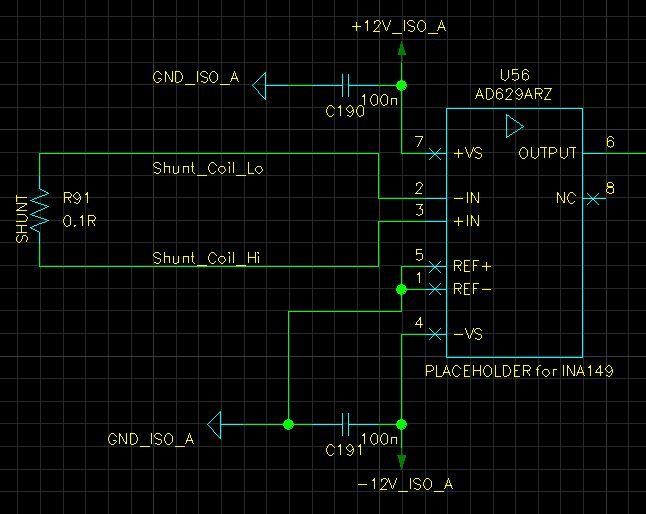Hi there,
look at my design. (Note I use INA149, but have schematics with AD629 as a placeholder; don't be confused :-)
What's my concern?
Does INA149 works correctly with inputs floating as you see in my schematics? I've got high-side shunt for current measurement, expect > 200 V common voltage.
There is dirrect connection of shunt terminals to INA149 inputs.
Please, confirm that I don't need to ground -IN or +IN input. My analogue ground is a middle of +/-12V TRACO ouput.
Thanks
Petr


